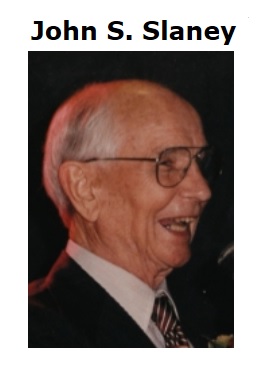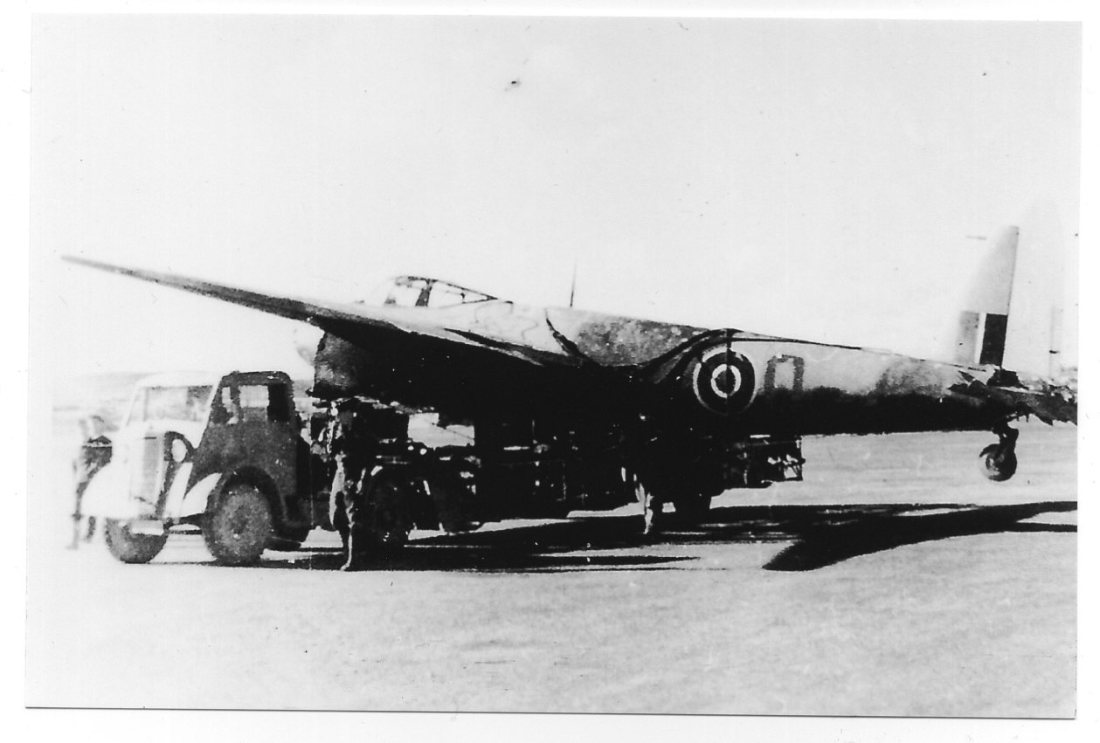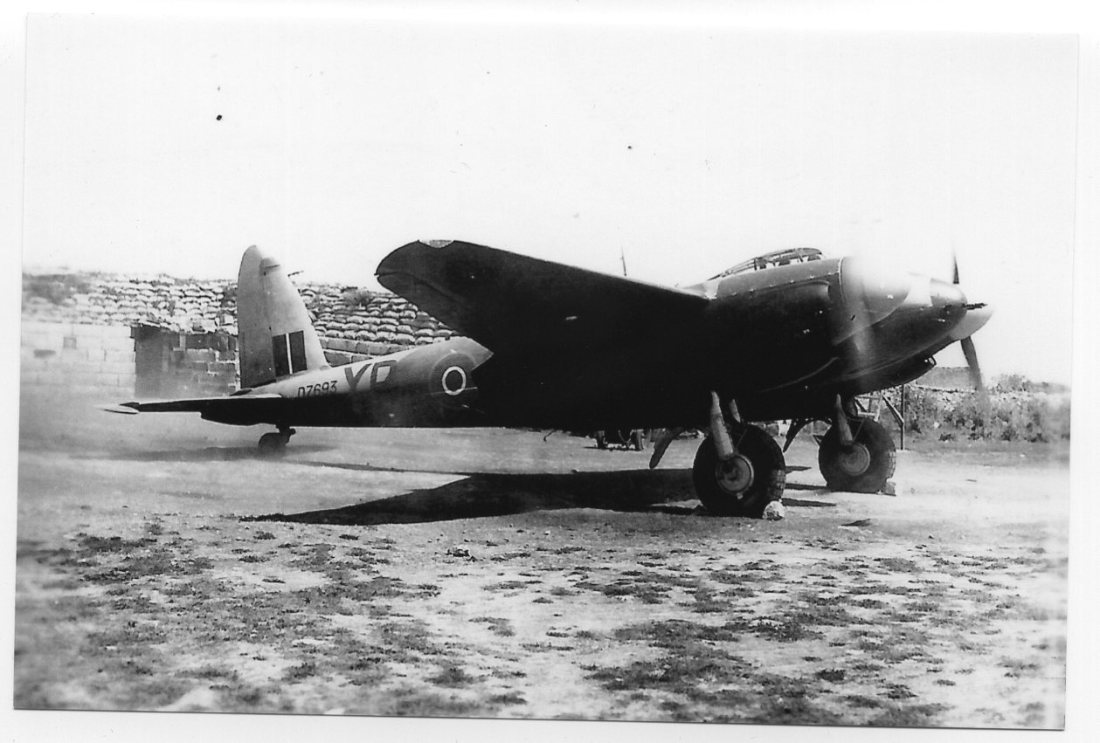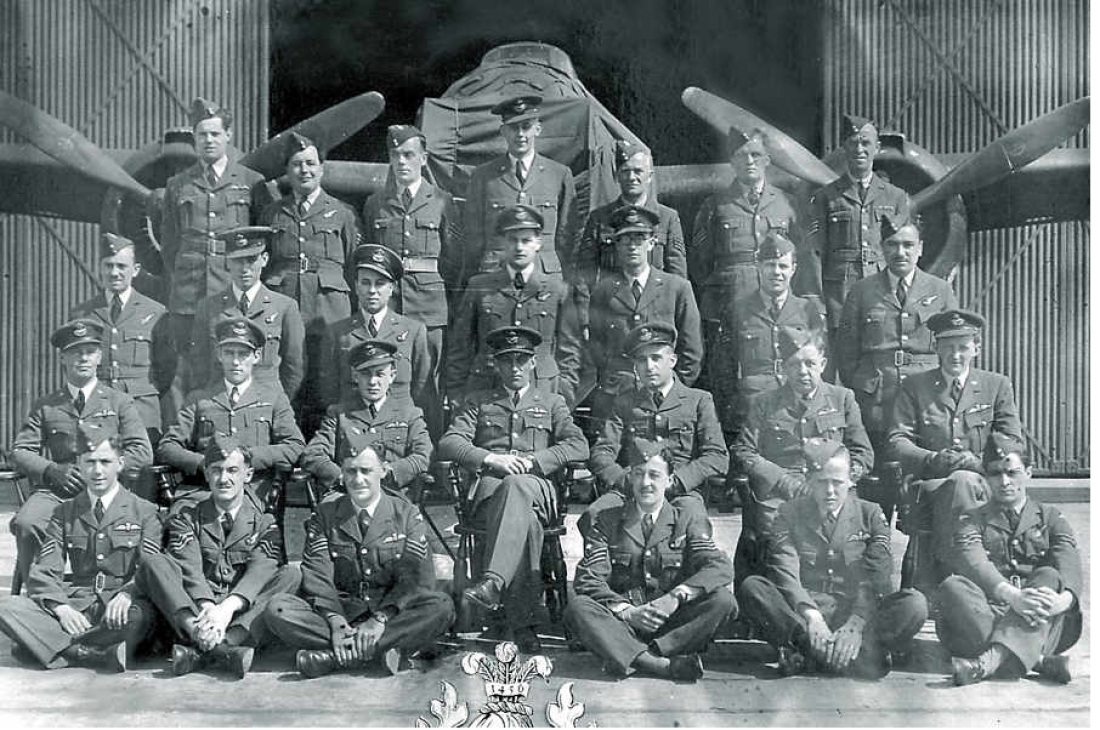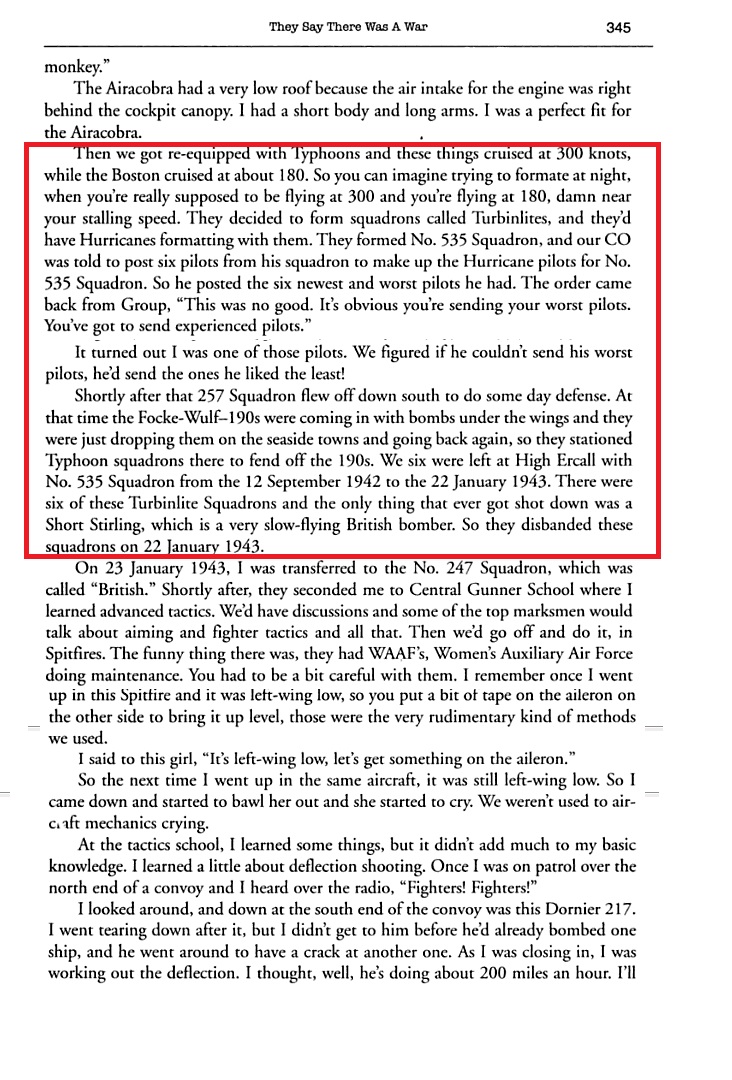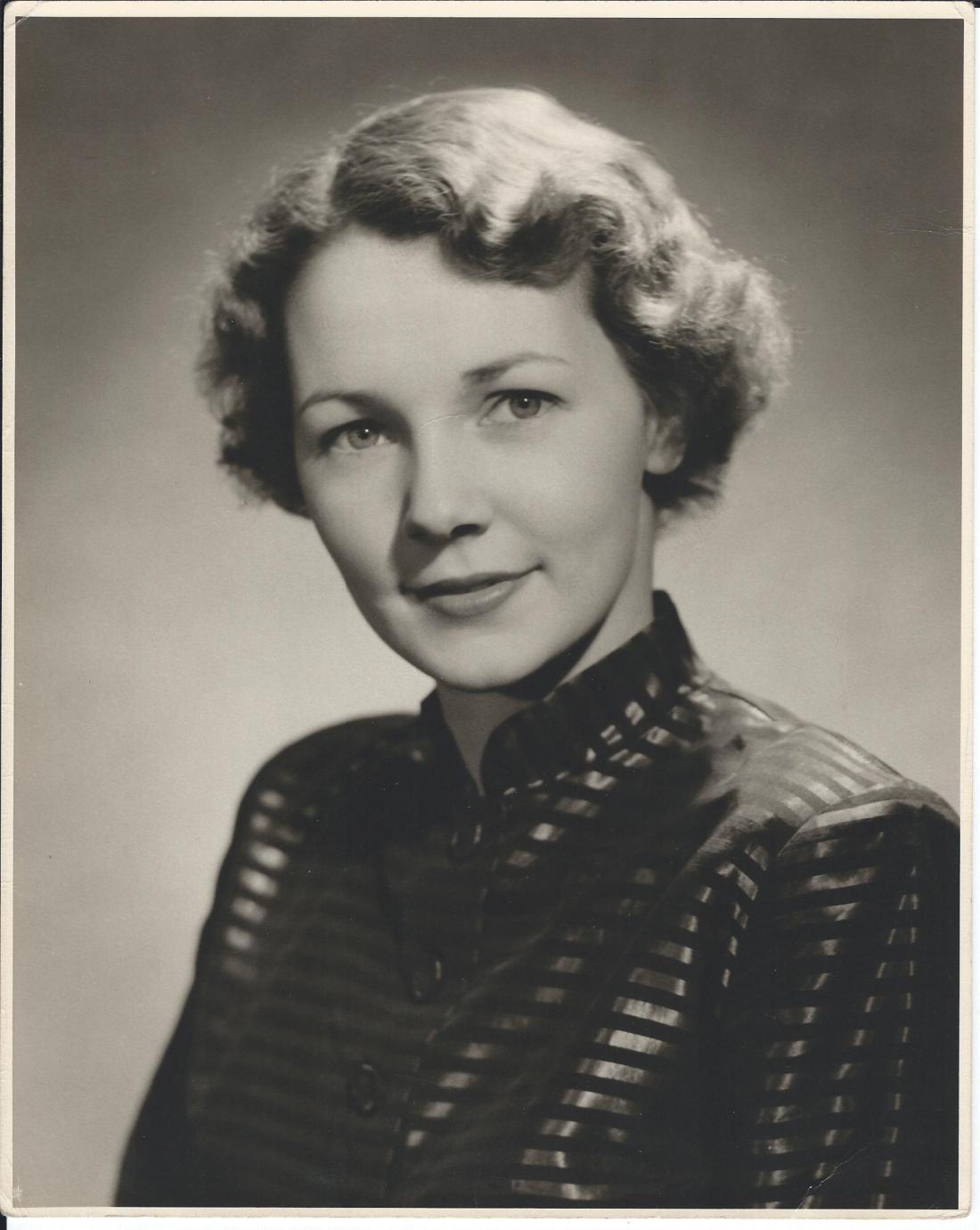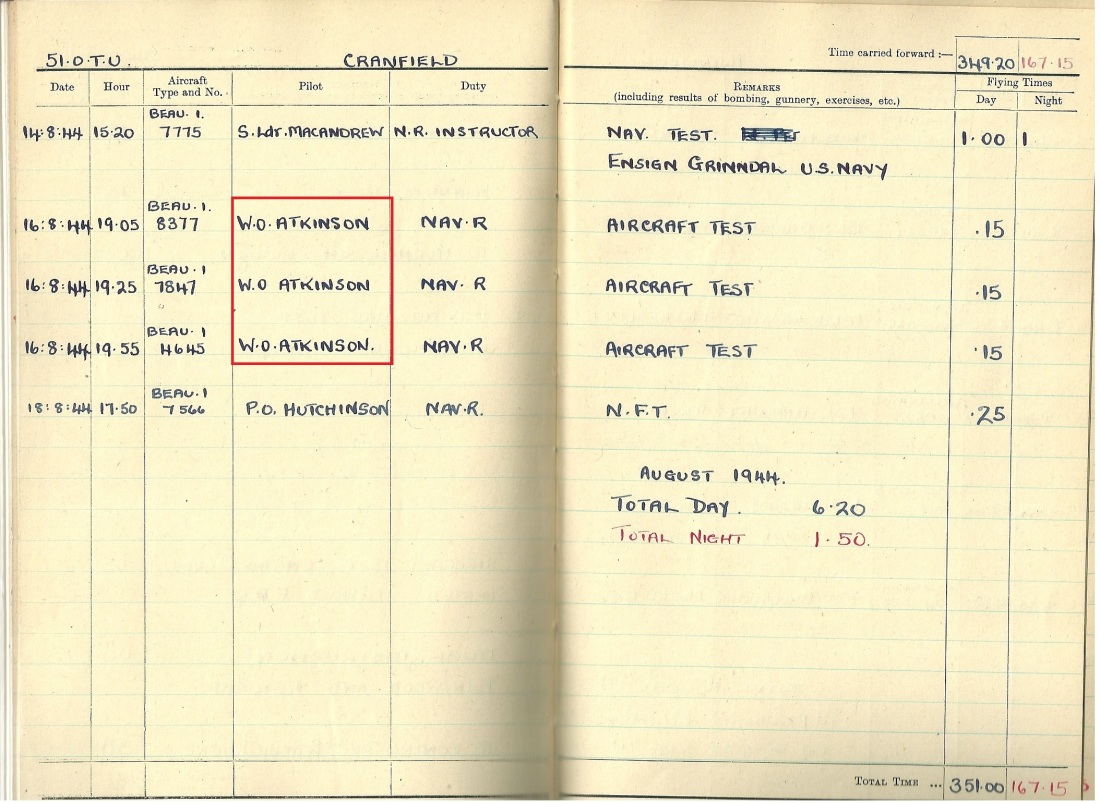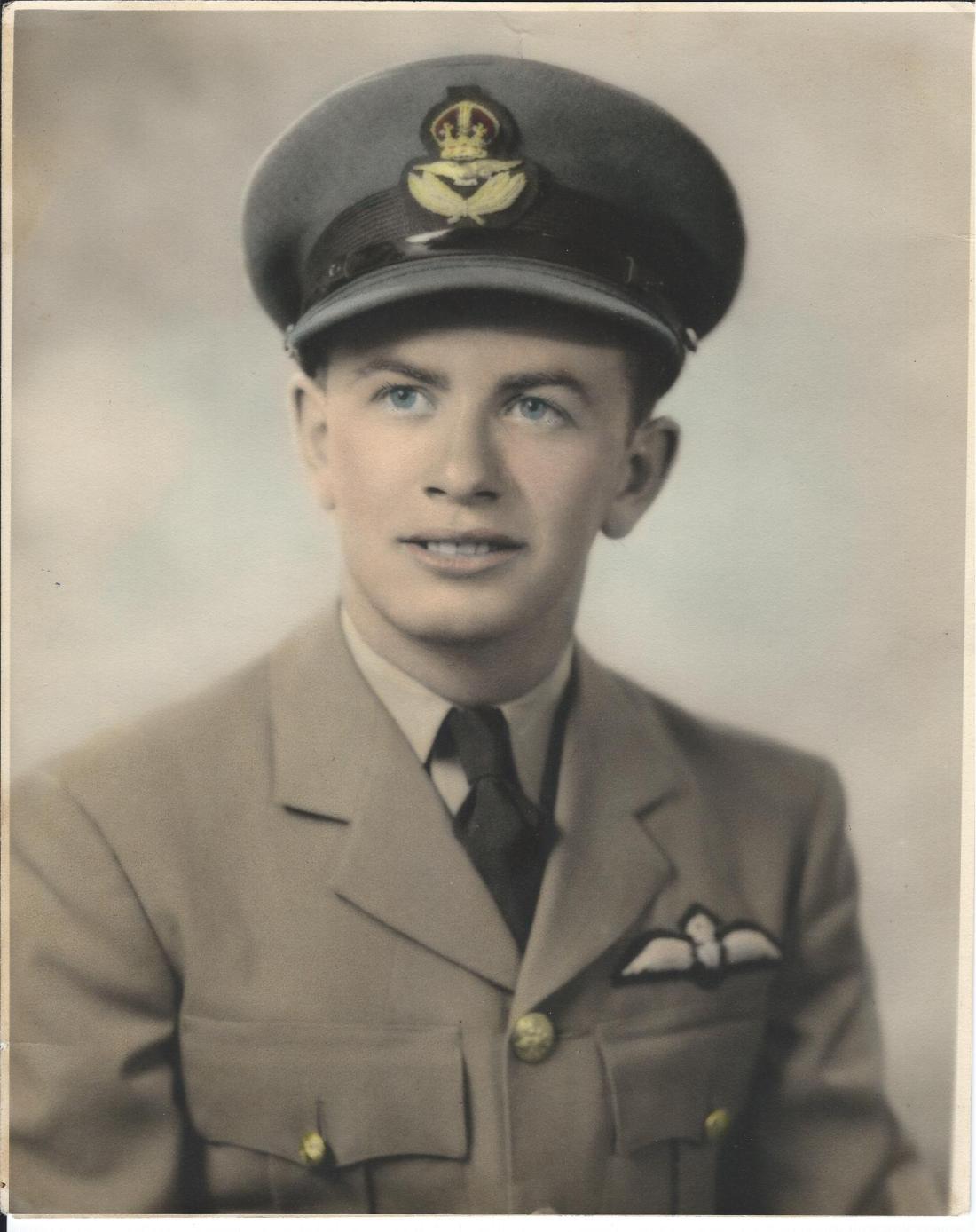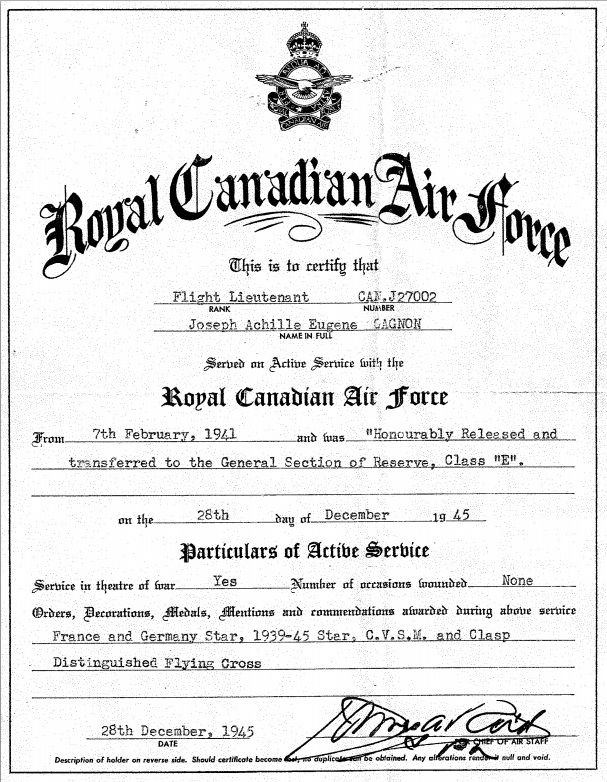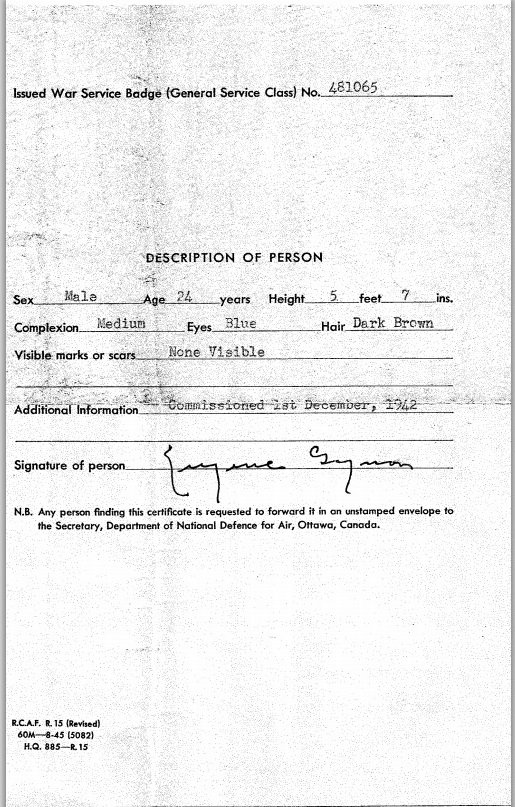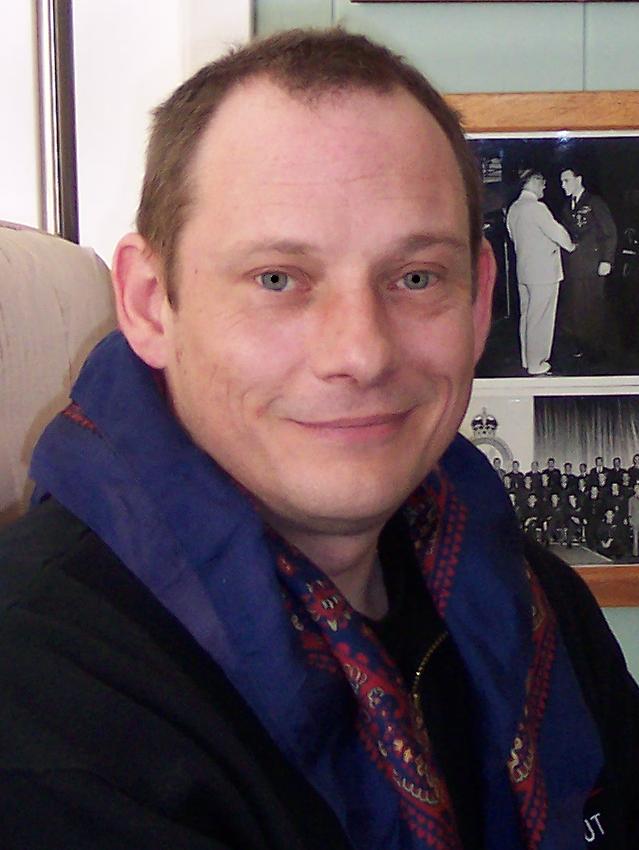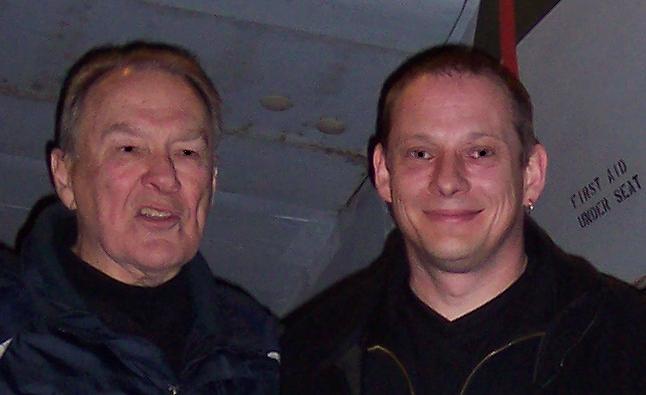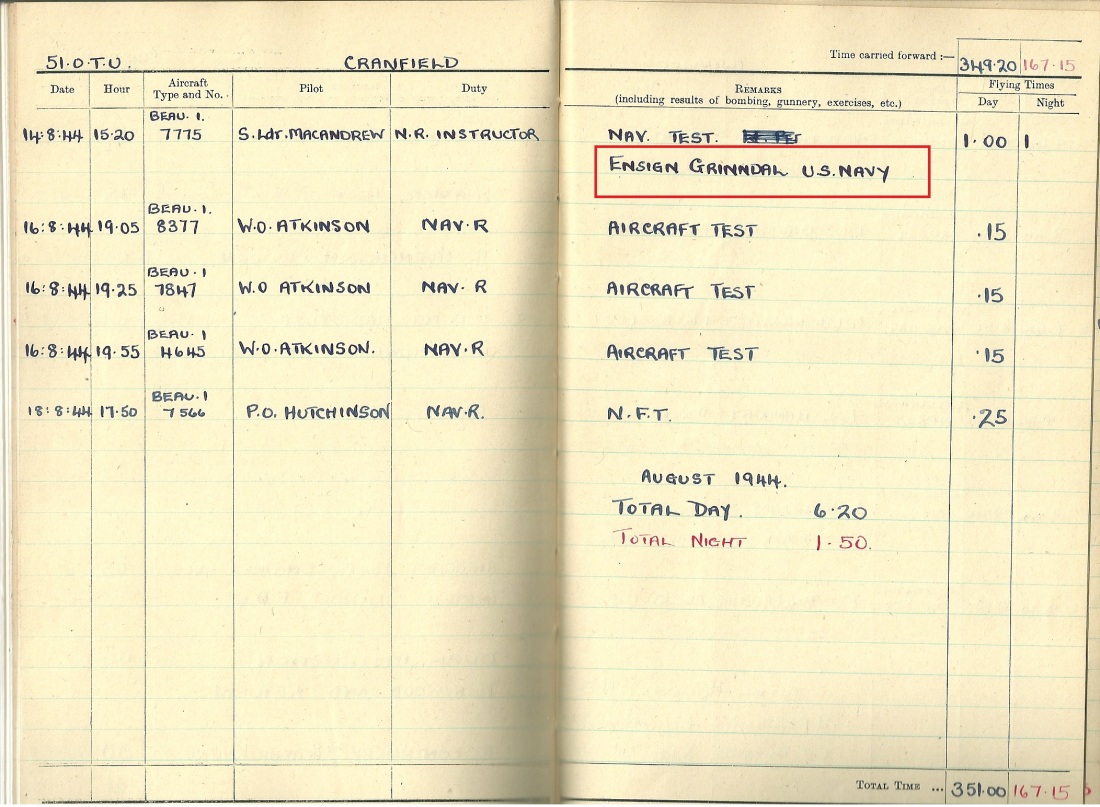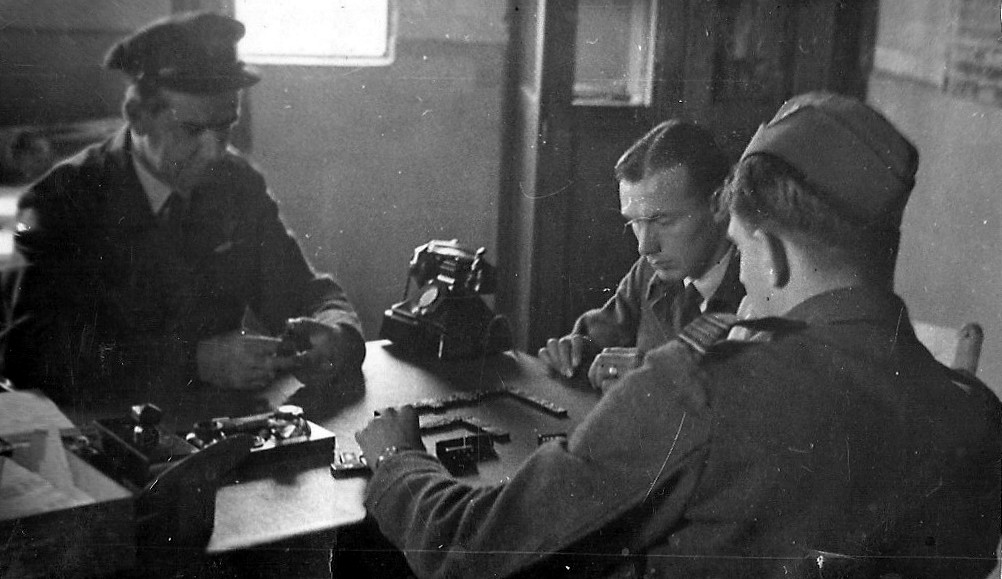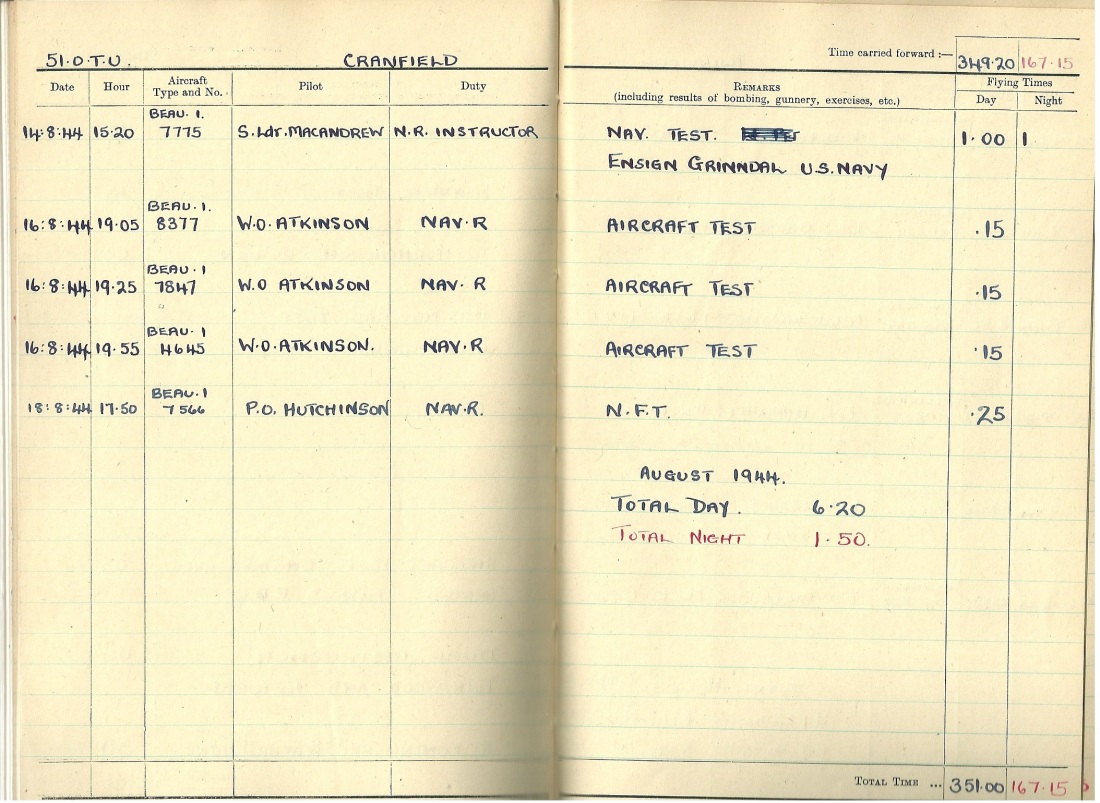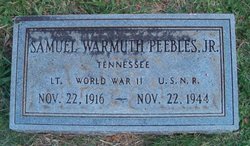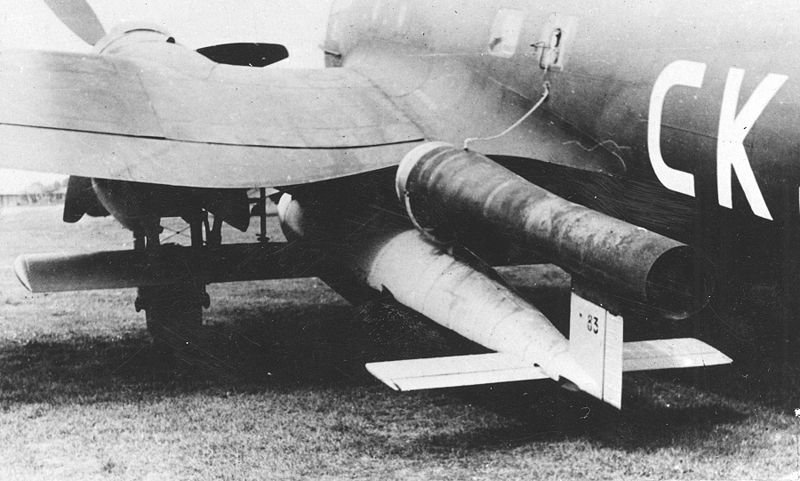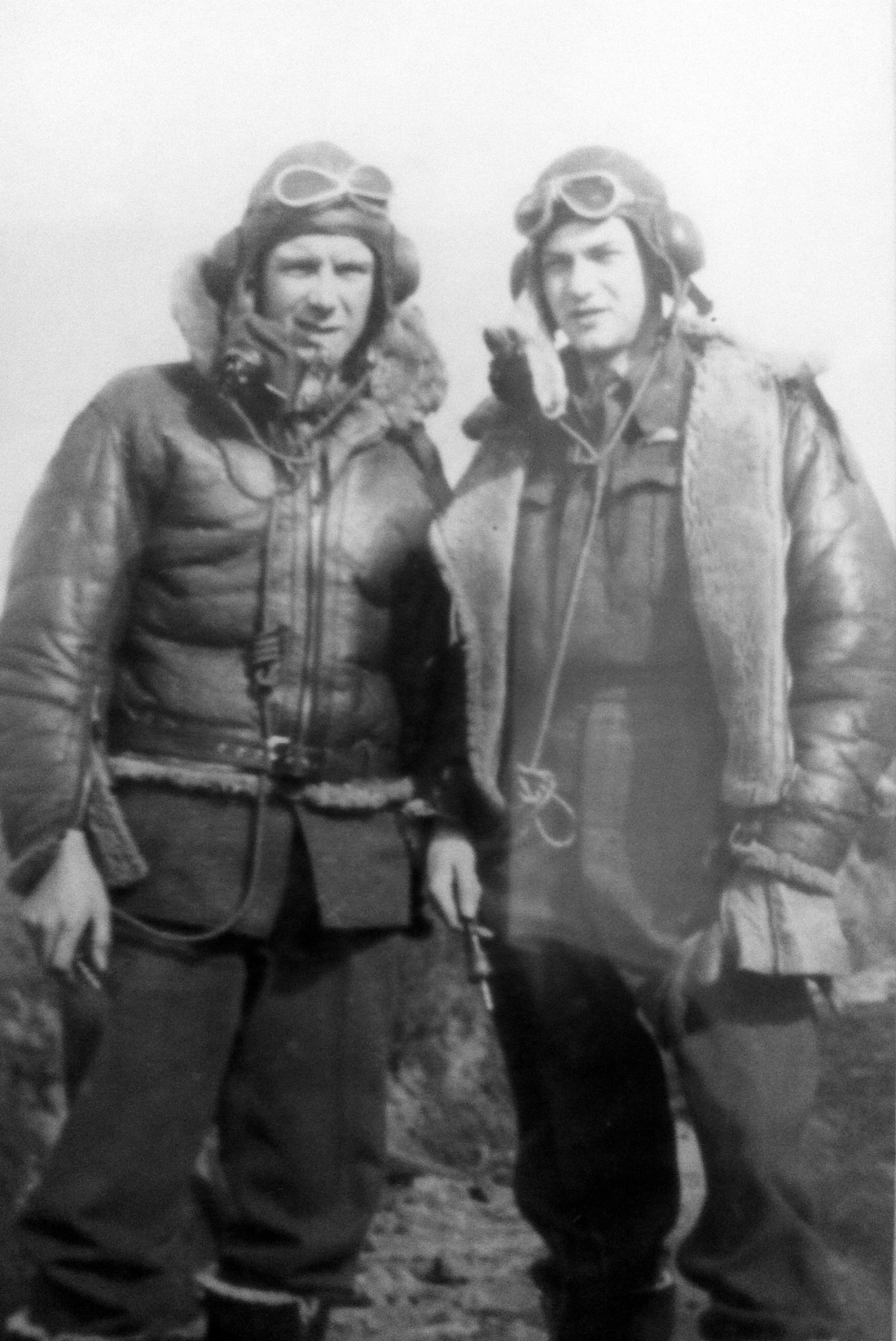Updated 18 February 2022 with this comment
Je me souviens aussi parfaitement de lui. Nous avons eu l’honneur de l’accueillir dans notre petit village de Danvou-la-Ferrière où il est venu sur les lieux de son crash et a pu rencontrer la jeune fille qui l’avait hébergé 56 ans auparavant. Nous nous sommes aussi rendus avec lui au château où se trouvaient les SS et où il fut retenu. Il me semble qu’il était accompagné de son fils Patrick. C’était en octobre 2000
Translation
I also remember him perfectly. We had the honour of welcoming him to our little village of Danvou-la-Ferrière where he came to the scene of his crash and was able to meet the girl who had sheltered him 56 years before. We also went with him to the castle where the SS were and where he was held. I think he was accompanied by his son Patrick. It was in October 2000
Original post
You don’t have to buy the book They Say There Was a War.
John Samuel Slaney was a Hurricane pilot that was transfered to 247 Squadron after being sent to 535 Squadron. He then went on to fly Typhoons and he survived the war to tell about it.
He was a very lucky pilot because the average number of operations before being killed while flying operations on Typhoons was around 11 or 12 missions.
John Samuel Slaney shed a little light on how 535 Squadron was having fun flying alongside Havoc Turbinlites.
John Samuel Slaney wrote his memoirs…
Typhoon Pilot.
While searching for it I found this.
Slaney, John S. 87
Formerly of Greensburg
John Samuel Slaney, formerly of Greensburg, passed away peacefully at home in Canonsburg on Sunday, June 22, 2008, at the age of 87.
John was a highly decorated World War II RAF fighter pilot who spent the last year of the war as a POW. He was also a world-renowned metallurgist who retired from Latrobe Steel in 1986.
John is survived by his wife, Elizabeth; sister, Lillian Mandviwalla, of England; son, Patrick Slaney and his partner, Susan Rice, of Massachusetts; daughter, Victoria Ross and her husband, John Ross, of Pennsylvania; son, Ian Slaney and his wife, Martina, of England; grandsons, Patrick and Alexander Ross and their wives, Allison and Rebecca; grandsons, James and Philip Clark; and great-granddaughter, Brianna Ross.
John was a kind and embracing man who will be dearly missed by all who had the pleasure of knowing him.
John was born in Birmingham, England, March 1, 1921. At the age of 14, John quit school to provide income for his family after his father passed away. At 18, John attempted to enlist in the military, but was turned away because he was employed as a pattern maker, a trade deemed critical to national security. Later, though, with the cooperation of his employer, he was granted permission.
John joined the RAF as a fighter pilot, knowing that the average survival period was less than six months. John matured quickly as a pilot, fighting off the hazards of enemy fire and the high risks of flying single engine Spitfires, Hurricanes and Rocket Typhoons. He eventually advanced to the rank of flight lieutenant, completing 112 sorties between 1941 and 1944, before being shot down over enemy territory in Normandy on June 15, 1944, nine days after D-Day.
John finished the war as a POW in Stalag Luft 1 in northern Germany. On returning home to England, John learned that King George had recognized his brave and unwavering service in defense of England by awarding him the DFC (Distinguished Flying Cross), the highest ranking medal bestowed on a surviving fighter pilot.
John then entered London University’s Royal School of Mines to study metallurgy. After graduation, he pursued a career that spanned the globe from South Africa to Canada to New York state and then finally to Western Pennsylvania. In the process, John produced a number of revolutionary products and processes, including several patents for high performance alloys. One alloy developed while working for Special Metals in New York was key to preventing catastrophic failure of jet engine turbine blades due to time-weighted exposure to extremely high temperatures. John’s new alloy was quickly adopted for every new turbine blade manufactured and all existing blades were recalled from the field. Now, more than 40 years later, not one turbine blade has failed in this manner.
Above all of John’s talents as a professional, perhaps the most memorable qualities to those who knew him were his kind, generous personality and passion for political change. John was a friend to all. He was always there to offer help to anyone in need, and he fought especially hard to eliminate discrimination, to support human rights, to save the environment, and to support the underprivileged. John was the kindest of fighter pilots. The family asks that in John’s memory, a donation be sent to the charity of your choice.
I know John will be missed…



